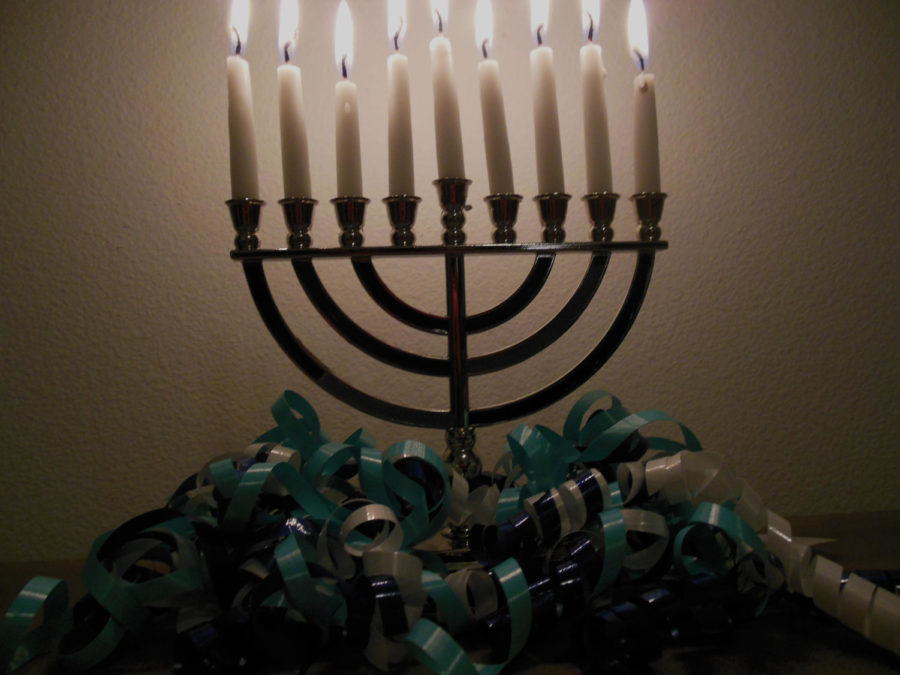Iowa State students celebrate variety of cultural holidays
December 2, 2014
As November comes to an end, December appears with chilly weather, holiday decorations and students starting to celebrate holidays of multiple cultures.
ISU students, who come from numerous different cultures, backgrounds and races, celebrate an assortment of winter holidays. Some of these holidays include Chinese New Year, Hanukkah, Kwanzaa and Christmas.
Cultures take pride in celebrating holidays and incorporating traditions to play a role in their festivities.
Chinese New Year falls on different dates between Jan. 21 and Feb. 20 every year. This year, the holiday falls on Feb. 19, 2015. The New Year’s Eve dinner is a feast of fish, noodles and dumplings.
Chinese New Year is usually called Chunjie in Chinese, which translates as spring festival in English.
“In tradition, Chinese New Year is a good chance to bring fortune for people in the coming years of their lives, such as farming, career, business and so on,” said Fugang Sheng, graduate student in civil engineering.
Preparation for Chinese New Year includes cleaning the house, making traditional food, fireworks and staying up until midnight.
Cleaning the house is called “sweeping out the dust” and represents pushing away old troubles, according to China Highlights.
The tradition of staying up late is called shousui, pronounced “show-sway” and means “to keep watch over the year.”
“We also go to the memorial ancestry,” Sheng said. “It is a traditional day to send out love to our ancestry. We go to the tomb in our hometown, kneel down to them and put your head on the ground three times.”
The day of the Chinese New Year, people celebrate by shooting firecrackers and fireworks and watching lion and dragon dances.
Jewish individuals celebrate Hanukkah, a holiday honoring the Maccabees’ victory over King Antiochus, who forbade Jews to practice their religion.
For eight nights, Hanukkah is celebrated with prayer, the lighting of the menorah and food. A menorah has nine candles, one candle for each of the eight nights, plus a helper candle.
Children play games, sing songs and exchange gifts. Potato pancakes, known as latkes in Yiddish and traditionally associated with Hanukkah, are served with applesauce and sour cream. This year, Hanukkah starts on the evening of Dec. 16 and the last night is Dec. 24.
Kwanzaa is celebrated Dec. 26. It is a seven-day celebration of African culture meant to reconnect African-Americans with their heritage.
“Each day, from Dec. 26 until Jan. 1, a different principle is focused upon,” said Paige Dejohnett, junior in elementary education.
Kwanzaa lasts a week in which participants gather with family and friends to exchange gifts and light a series of black, red and green candles. These symbolize the seven basic values of African-American family life: unity, self-determination, collective work and responsibility, cooperative economics, purpose, and creativity and faith.
“My favorite part of the holiday is how much time my family spent together over the course of the seven days. On the last day, we would all cook a meal together,” Dejohnett said.
A candle is lit each day, Dejohnett said, with a black candle being lit first, then alternating between the green and red candles.
“My family would always do activities based on the daily principles,” Dejohnett said. “For example, on the third day, known as Ujima, which means collective work and responsibility, we would all volunteer somewhere as a family.”
Another winter holiday is Christmas. Christmas is a celebration of the birth of Jesus of Nazareth. In the United States, among other countries, Christmas brings together many customs from other countries and cultures.
Around the world, family members help decorate their Christmas tree and home with bright lights, wreaths, candles, mistletoe and ornaments. On Christmas Eve, many people go to church.
“I come from a family with 30 cousins,” said Abby Harrison, sophomore in elementary education. “Every year since we were young, my cousins and I would perform the nativity scene to my relatives on Christmas Eve.”
Some children also await the arrival of Santa Claus, who is said to deliver gifts on Christmas Eve to children who have been well-behaved that year. According to history.com, the legend of Santa can be traced back hundreds of years to a monk named St. Nicholas who is believed to have been born about 280 A.D. near what is now Turkey.
St. Nicholas was known for his kindness and generosity, giving away his inherited wealth to travel and help the poor and sick.
After his legend spread through years and to Western culture, St. Nicholas’ Dutch nickname, Sinter Klaas, eventually transformed into Santa Claus, but he is also known as Kris Kringle, Old St. Nicholas or Father Christmas.
“Christmas has always been a huge celebration for my family,” Harrison said.

















